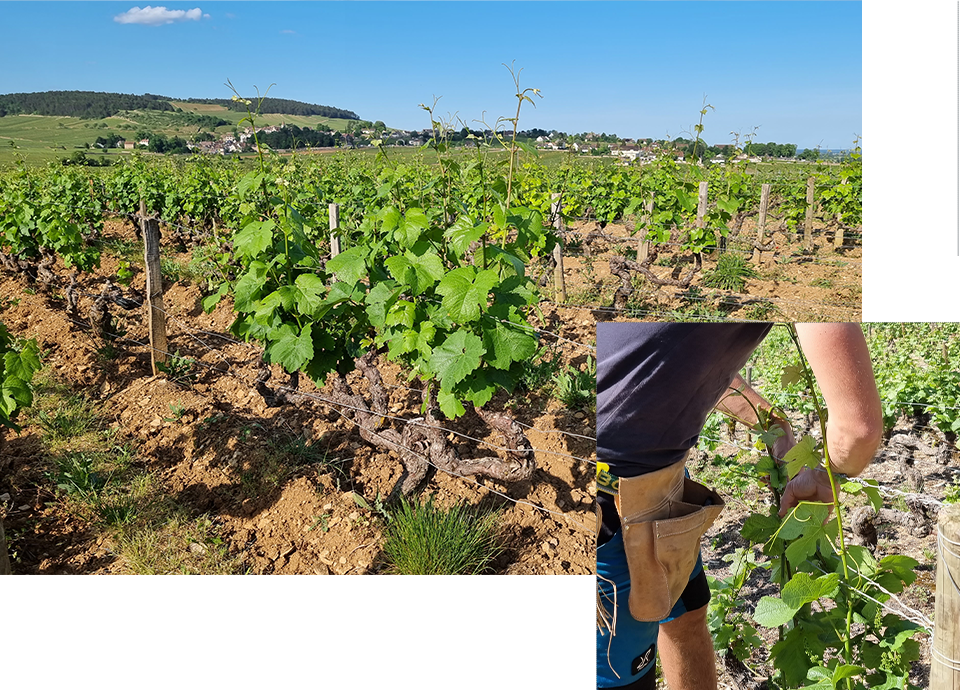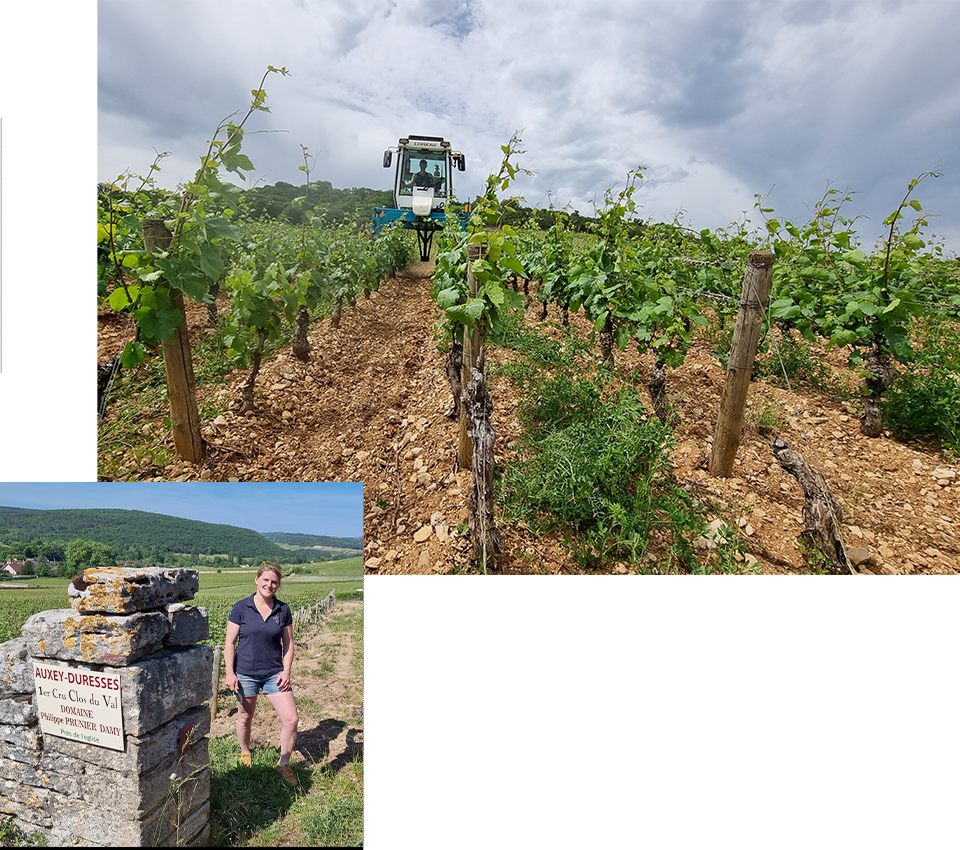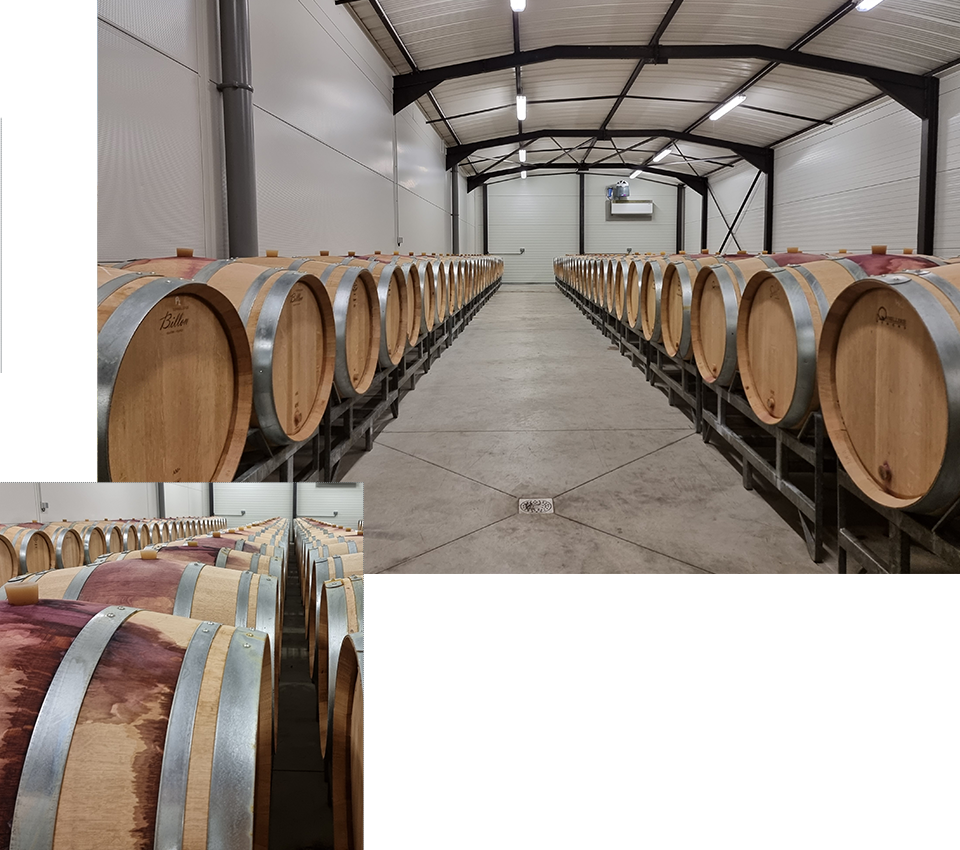Our expertise

CULTIVATING THE VINES
The cultivation of the vines follows a cycle.
The pruning takes place in winter and the shoots are shredded to introduce natural humus to the soil.
In March, the trellising is repaired, new vineyards are planted, and the canes are tied down.
In April and May, disbudding work is carried out to control the yield; this is followed by training and supporting, which involves setting up the wires and arranging the canes between them.

At the very beginning of spring, subsoiling is carried out to decompact the soil, followed by mechanical weeding using hoes and disc harrows to remove the weeds from the surface.
The vines are treated from mid-May to the end of July in order to protect them against diseases – mainly downy mildew and powdery mildew, which attack the leaves and grapes respectively. Jordan follows a strict schedule, which is determined by the weather, aiming to limit treatments to a minimum, and using organic contact and systemic products (more effective than organically labelled products, and less polluting because two or three times less product is used and, therefore, the soil is better protected.)
This is one of the reasons we haven’t sought the AB label (organic farming) – we feel reassured that our methods are reasoned, well thought out, and in line with nature.
In autumn, we plant a vegetation cover in every other row (clover, mustard, oats and vetch).
They serve to restructure and decompact the soils, limit weeds, repel and destroy nematodes, and add nitrogen.
This allows us to reduce the tilling that destroys soil life and to reduce our carbon footprint.
HARVESTING
The harvest begins when the clusters have reached perfect maturity. This relates to the solid elements of the grapes, the skins and seeds.
We refer to this as phenolic maturity.
After picking, the grapes are destemmed, then sorted to remove any affected by rotting or a lack of maturity. Then they are conveyed into stainless steel vats and it’s time for vinification.
From one vintage to another, and from one appellation to another, we take special care with each cuvée.

VINIFICATION AND MATURATION
ALL OUR WINES
For both our reds and whites, our objective is to offer precise and delicate wines that are representative of their terroirs.
Red wines
After the grapes are sorted, vinification takes place in thermoregulated stainless steel tanks; both the fermentation and the temperature are carefully controlled for optimal preservation of the fruit and the structure. A low temperature is maintained at the beginning of fermentation to gently extract tannins and colour, and to prevent “green” aromas.
Gentle vinification with some punching down, but more emphasis on pumping over. Once the fermentation is complete, the grapes are gently pressed using a pneumatic press. The wines are then placed in barrels to begin maturation.
Matured for 12 months in oak barrels; depending on the vintage, a percentage of new barrels may be introduced.
For wines with great structure, the barrels bring out depth and complexity; for cuvées with delicate tannins, no new barrels are used in order to retain the typicity and freshness.
White wines
The grapes are pressed immediately, as maceration could lead to green and/or oxidised aromas, which are undesirable
Fermentation takes place in barrels, which contribute aromatic finesse.
Throughout the process, a low temperature is maintained (16–18°C) to retain all of the fruit and structure.
Matured in oak barrels, a percentage of which are new barrels depending on the vintage, providing body and finesse.
